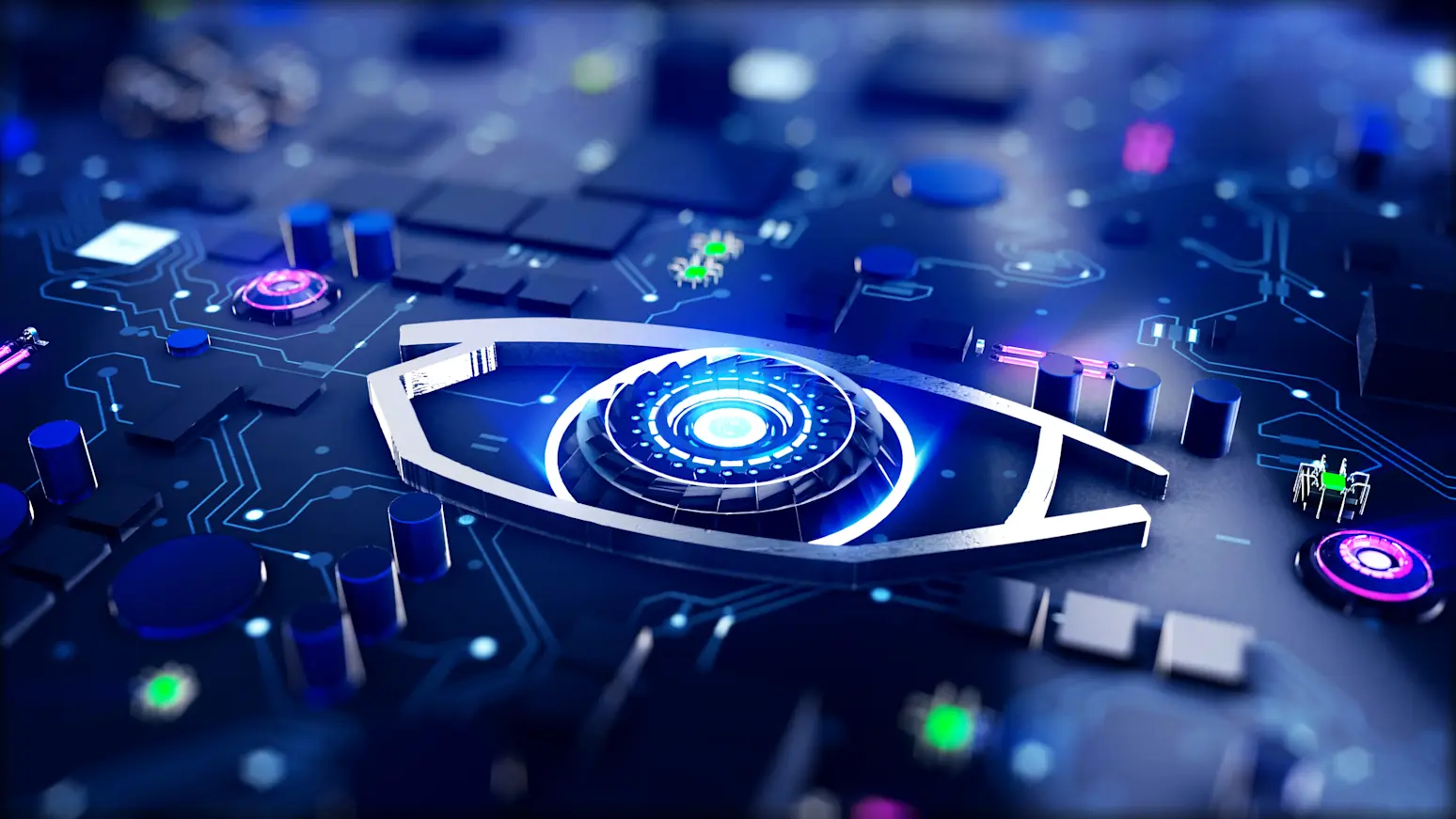
Learn more about RPA, what it is, how it integrates with AI, and how it can ensure compliance and improve efficiency in the derivatives industry.
RPA – Robotic process automation in derivatives and finance
Robotic process automation, or RPA, is becoming more widespread, both in general and in the derivatives and financial markets industry more specifically.
With efficiency and accuracy being of paramount importance, this technology has several benefits, from increasing productivity and efficiency to reducing costs, and can be integrated with artificial intelligence (AI) to produce more intelligent responses.
In this article, we will look at what RPA is and the different types, how it integrates with AI, and how it can be applied to the derivatives and financial markets industry specifically.
What is robotic process automation?
Robotic process automation is a technology that utilises software robots to automate repetitive, often mundane tasks that a human would usually undertake on a computer. For example, data entry, file moving, form filling, and system integration.
Often, employees spend a lot of time working on these tasks, leaving room for human error and inefficiencies. The aim of robotic process automation is to streamline workflows, boost efficiency and reduce costs by freeing up human labour, giving employees time to focus on creative tasks and tasks that automation could not replicate effectively.
Automation refers to the use of technology to perform tasks with minimal human intervention, using software, machines or other systems instead after decision criteria and subprocess relationships are predetermined.
RPA differs from traditional automation in that it mimics human actions by interacting with applications through the user interface, while traditional automation would use application programming interfaces and custom scripting. Thus, robotic process automation is faster, more flexible, and not as intrusive.
There are different types of RPA, and they have different functions, but together they offer the potential to benefit your business.
Scope and types of robotic process automation
The scope of RPA in finance has expanded over time. At first, it was expected to be used more in back-office processes, but it’s now being used more creatively, often alongside other technologies like artificial intelligence and machine learning. This allows for more complex decision-making and fresh opportunities for implementation.
There are two main types of RPA: Unattended and attended. The most suitable type of RPA will depend on factors including the amount and frequency of human intervention needed, the requirements of the task, and the frequency of the process itself.
Unattended robots can:
Operate on their own without human intervention 24/7, making them suitable for global markets with multiple time zones.
Handle large volumes of data to free up human workers from repetitive, high-volume tasks.
Reduce the opportunity for human error because there’s less intervention from human workers.
Be prompted by specific events or scheduled to run at specific times and operate in the background without having an impact on ongoing process performance.
Offer the potential for end-to-end automation, which is when robots can carry out entire processes independently.
In contrast, attended robots can:
Operate alongside humans, so a worker would be able to trigger the robot when they want it to run.
Work almost as virtual assistants, helping with front-office tasks.
Increase productivity and output by finishing tasks or helping them along.
Allow managers to organise tasks between workers and robots and coordinate across assets.
Both unattended and attended bots can be used together in a hybrid approach. Unattended bots can begin the process, before passing it on to an attended bot when more human oversight may be needed.
There is another form of RPA: cognitive or intelligent RPA, which involves the integration of AI technologies with RPA. Cognitive RPA can include the use of AI technologies like machine learning and natural language processing to better handle structured and unstructured data alike. In derivatives and trading, unattended and cognitive robotic process automation are more common.
Robotic process automation and AI integration
Businesses are increasingly integrating RPA with AI to produce more intelligent automation processes.
The two can complement each other’s strengths. RPA undertakes repetitive, rule-based tasks, while AI can handle unstructured data, learn from new data, and make decisions. This can provide a more complete view of data.
For example, an RPA can process structured documents, like forms, while an AI would be able to extract data from an unstructured document, like an email or a PDF.
RPA and AI integration further improve efficiency and streamline workflows, can be more cost-efficient than the use of RPA alone, and improve compliance by guaranteeing adherence to protocols.
Another example would be the use of RPA to automate anti-money laundering checks while AI is used to monitor data for suspicious activity.
When they’re used alongside each other, it is referred to as intelligence process automation, or IPA. It combines technologies including RPA, AI, machine learning (ML) and optical character recognition, and it differs from regular RPA in that it can learn from previous interactions and improve as time goes on.
Integrating both companies can improve decision-making in real time and adapt faster to changes in regulation, the needs of clients, and fluctuations in the market without increasing the workload on human employees.
RPA in the derivatives and financial markets industry
There’s a lot of scope to utilise RPA in the derivatives and financial markets industry, due to the need for accuracy and compliance.
RPA can help detect fraud and reduce risk, ensure compliance from a legal standpoint, improve customer service, and automate trade settlements.
Using legal compliance as an example, keeping up with new changes and ensuring compliance can be stressful for a human employee. But RPA makes it easier to keep track of compliance. Manually screening personal identification documents can be tricky when there’s a large number to go through, but by using RPA – with technologies including optical character recognition and image recognition – the process becomes a lot easier and faster. There’s less scope for error, too.
Likewise, RPA can help improve customer service. Though service providers don’t deliberately offer poor customer service, it can be difficult to provide that support efficiently due to the real-time volume of transactions.
Chatbots are a form of RPA. They’re often used to help customers with questions about transactions or account information, reducing the workload on human employees. They can then focus on issues that require more complex investigation.
RPA is likely to play a larger role in the derivatives and financial markets industry going forward, helping to streamline and automate workflows and improve processes, operating alongside human workers.
Benefits and challenges of robotic process automation
There are a number of benefits of RPA in the derivatives and financial markets industry, with the following being among the most notable:
Automating repetitive and rule-based tasks to help save time and energy.
Creating more streamlined workflows.
Increasing productivity and reducing the opportunity for human error to help save money.
Improving risk management, providing better security, and tighter compliance.
At the same time, there are challenges in implementing RPA, including the following:
Incorporating it into existing systems: Ensuring that RPA is compatible with pre-existing infrastructure can be challenging with many companies using systems developed some time ago. It’s advisable to weigh up the workability of RPA with your existing systems.
Ensuring data security: When automating processes, sensitive customer data may be accessed, and this could lead to data breaches or the data being accessed without permission. Companies should ensure that any RPA systems they use adhere to data safety laws and put strong measures in place to protect data, with regular monitoring to identify any potential issues.
Ensuring compliance with existing industry regulations: It’s a good idea to conduct an analysis to determine how your RPA systems align with them.
Requiring skilled professionals:While RPA can take repetitive, data-heavy tasks away from human employees, its use requires professionals who are familiar with both the derivatives and financial markets industry and the technology itself. However, demand may outweigh supply here, so it may be necessary to train existing employees to work with RPA in order to harness its full potential.
Understanding both the benefits and the challenge of RPA is vital when it comes to applying technology to maximise efficiency and productivity. FOW Reference Data helps businesses manage risks by providing quality, reliable and standardised reference data, while ensuring that you can make the most of the benefits at the same time.
Example of use cases
There are many ways robotic process automation can be used in the derivatives and financial markets industry, including the following:
Trade reconciliation: Unattended robots can be used to compare trades and positions across multiple systems automatically, ensuring accuracy and highlighting any potential discrepancies.
Trade lifecycle automation: RPA can automate multiple aspects of the trade lifecycle, including capture, validation and confirmation to become more time-efficient and lower risk.
Compliance management: RPA can consolidate data to make compliance reporting simpler, while intelligent RPA can utilise machine learning technology to find the data an auditor may need to review and store it in an appropriate location.
Enhance client onboarding and customer service: Intelligent RPA can automate knowing your customer and anti-money laundering verification processes and can also inform stakeholders about events like customer complaints.
RPA, particularly when integrated with AI, is set to become a more important part of processes in finance and derivatives, with companies investing in the technology earlier well-placed to handle market volatility and changes in regulations.
Find out more about our data solutions and request our premium sample data today to find out how it can help you develop your company’s RPA strategy. To stay up to date with any moves, launches or changes in RPA, subscribe to FOW Intelligence.
Frequently asked questions
How is RPA used in the financial and derivatives markets?
RPA can be used in finance to automate repetitive and rule-based tasks like identity verification, data validation and compliance reporting, minimising the opportunity for human error and freeing employees to work on other projects. Companies can ensure accuracy and consistency by using data from FOW Intelligence.
What’s the difference between RPA and AI? RPA stands for robotic process automation, whereas AI is artificial intelligence. RPA does tasks – it imitates human actions to carry out repetitive and often mundane work – while AI thinks and learns. They can be used alongside each other, sometimes referred to as cognitive or intelligent RPA or intelligent process automation, to handle and interpret both structured and unstructured data.
How is RPA used in reporting?
RPA, particularly when integrated with AI, can automate both internal and regulatory reporting processes, highlighting and flagging potential issues when it collects and validates data from external sources like FOW Reference Data.
Can robotic process automation replace human employees?
RPA coexists with human workers rather than replacing them, carrying out repetitive and time-consuming tasks to free them up to take on projects that require more creativity or human interaction. Human guidance is still needed to mitigate risk and interpret data.


